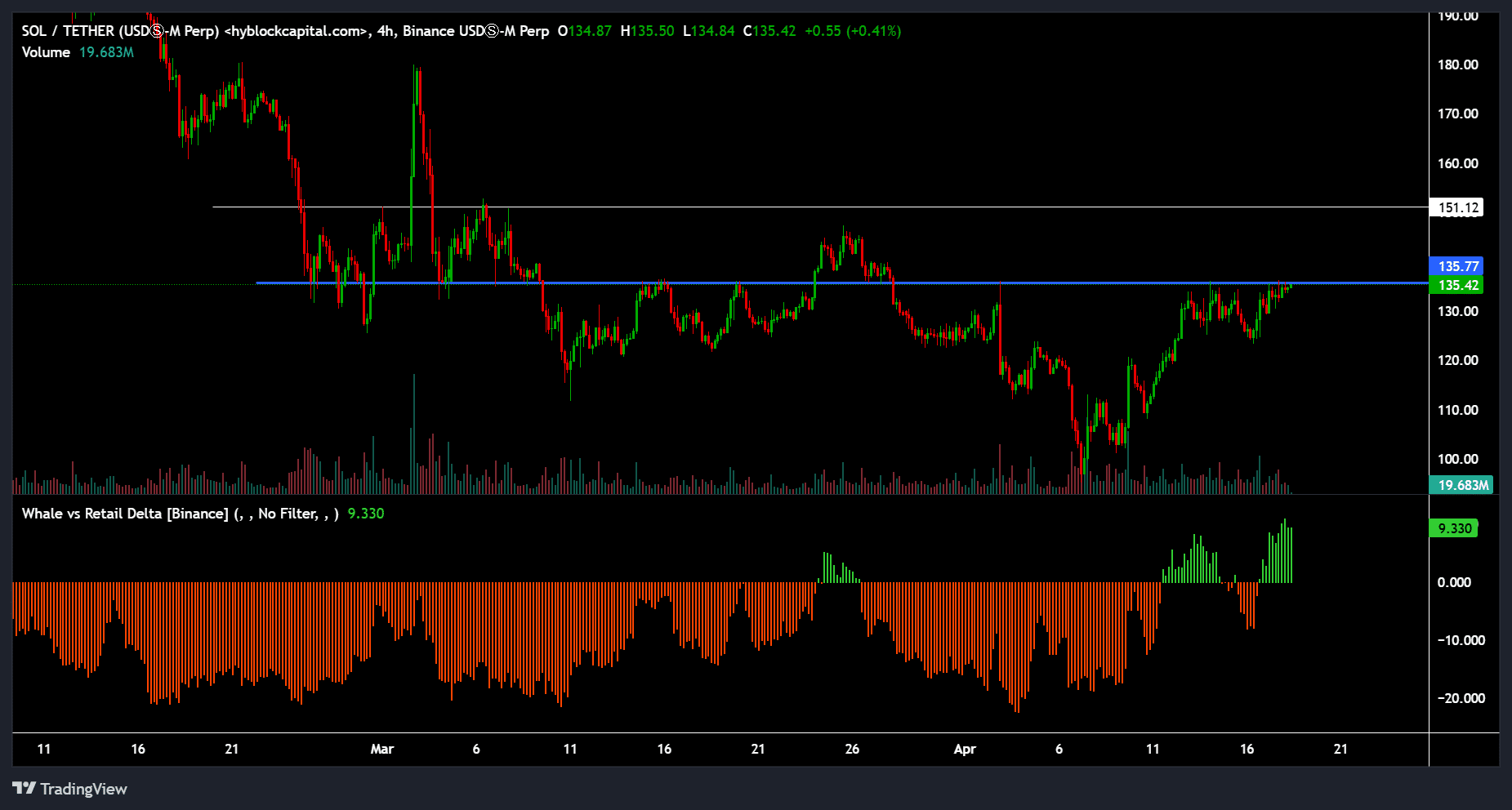| COINOTAG recommends • Exchange signup |
| 💹 Trade with pro tools |
| Fast execution, robust charts, clean risk controls. |
| 👉 Open account → |
| COINOTAG recommends • Exchange signup |
| 🚀 Smooth orders, clear control |
| Advanced order types and market depth in one view. |
| 👉 Create account → |
| COINOTAG recommends • Exchange signup |
| 📈 Clarity in volatile markets |
| Plan entries & exits, manage positions with discipline. |
| 👉 Sign up → |
| COINOTAG recommends • Exchange signup |
| ⚡ Speed, depth, reliability |
| Execute confidently when timing matters. |
| 👉 Open account → |
| COINOTAG recommends • Exchange signup |
| 🧭 A focused workflow for traders |
| Alerts, watchlists, and a repeatable process. |
| 👉 Get started → |
| COINOTAG recommends • Exchange signup |
| ✅ Data‑driven decisions |
| Focus on process—not noise. |
| 👉 Sign up → |
-
Solana’s inflation debate intensifies as Galaxy introduces a new proposal aimed at addressing the ongoing challenges faced by SOl holders.
-
The innovative framework suggests a shift towards a market-based mechanism for determining SOL’s future inflation rates, provoking mixed reactions among stakeholders.
-
Tushair Jain, co-founder of MultiCoin Capital, expressed critical insights regarding the new MESA proposal, signaling potential governance complications.
The Solana ecosystem confronts inflation challenges head-on with Galaxy’s new MESA proposal, aiming for a market-driven solution to govern SOL emissions.
Understanding the New MESA Proposal for Solana
The introduction of the Multiple Election Stake-Weight Aggregation (MESA) proposal marks a significant shift in Solana’s approach to inflation management. Unlike the previous SIMD-228 initiative, which implemented a one-time vote resulting in an 80% inflation cut, MESA allows validators to vote periodically on deflation rates, with the median outcome to be adopted.
This dynamic voting system is intended to be more responsive to stakeholder needs but raises questions regarding its feasibility and governance efficacy. The aim is to form a consensus on a sustainable inflation rate, reflecting the community’s evolving perspectives on SOL emissions.
Key Differences Between MESA and SIMD-228
The MESA proposal diverges noticeably from SIMD-228 in two main aspects. Firstly, while SIMD-228 initiated a single voting event, MESA proposes multiple voting sessions to derive an average deflation rate. Secondly, SIMD-228 adjusted to market conditions based on staking demand, whereas MESA envisions a more stable, fixed deflationary curve. This shift aims to provide a consistent framework for investors and stakeholders, potentially stabilizing SOL’s market value in the long run.
| COINOTAG recommends • Professional traders group |
| 💎 Join a professional trading community |
| Work with senior traders, research‑backed setups, and risk‑first frameworks. |
| 👉 Join the group → |
| COINOTAG recommends • Professional traders group |
| 📊 Transparent performance, real process |
| Spot strategies with documented months of triple‑digit runs during strong trends; futures plans use defined R:R and sizing. |
| 👉 Get access → |
| COINOTAG recommends • Professional traders group |
| 🧭 Research → Plan → Execute |
| Daily levels, watchlists, and post‑trade reviews to build consistency. |
| 👉 Join now → |
| COINOTAG recommends • Professional traders group |
| 🛡️ Risk comes first |
| Sizing methods, invalidation rules, and R‑multiples baked into every plan. |
| 👉 Start today → |
| COINOTAG recommends • Professional traders group |
| 🧠 Learn the “why” behind each trade |
| Live breakdowns, playbooks, and framework‑first education. |
| 👉 Join the group → |
| COINOTAG recommends • Professional traders group |
| 🚀 Insider • APEX • INNER CIRCLE |
| Choose the depth you need—tools, coaching, and member rooms. |
| 👉 Explore tiers → |
Reaction from the Community and Industry Analysts
Industry reactions to MESA have been varied. Tushair Jain has criticized the proposal on several fronts. He emphasized that the governance burden may overwhelm many stakers, resulting in decreased participation in voting. “It increases the governance burden on stakers who might not want to incur this cognitive load of deciding what inflation rate to vote for every epoch,” he stated. This feedback highlights a significant concern about potential staker disengagement due to the proposed complexity.
Conversely, prominent figures like Anatoly Yakavenko have shown a more favorable stance, suggesting that a median-weighted vote could enhance the proposal’s acceptance. This contrasting viewpoint indicates an ongoing debate within the community, essential for a well-rounded understanding of the proposal’s implications.
| COINOTAG recommends • Exchange signup |
| 📈 Clear interface, precise orders |
| Sharp entries & exits with actionable alerts. |
| 👉 Create free account → |
| COINOTAG recommends • Exchange signup |
| 🧠 Smarter tools. Better decisions. |
| Depth analytics and risk features in one view. |
| 👉 Sign up → |
| COINOTAG recommends • Exchange signup |
| 🎯 Take control of entries & exits |
| Set alerts, define stops, execute consistently. |
| 👉 Open account → |
| COINOTAG recommends • Exchange signup |
| 🛠️ From idea to execution |
| Turn setups into plans with practical order types. |
| 👉 Join now → |
| COINOTAG recommends • Exchange signup |
| 📋 Trade your plan |
| Watchlists and routing that support focus. |
| 👉 Get started → |
| COINOTAG recommends • Exchange signup |
| 📊 Precision without the noise |
| Data‑first workflows for active traders. |
| 👉 Sign up → |
Long-Term Outlook on SOL’s Inflation Rate
Currently, Solana’s target inflation rate rests at 1.5%, down from the existing 5% per year, aiming for a controlled disinflationary trajectory of 15% annually. However, stakeholders argue that without a comprehensive and widely accepted inflation schedule, maintaining investor confidence becomes increasingly challenging. High inflation pressures can lead to market volatility and price devaluation, factors that long-term holders of SOL are keenly aware of.
As discussions continue within the community, many anticipate that a consensus will emerge in favor of a more effective governance model that addresses both inflation management and broader stakeholder involvement.
| COINOTAG recommends • Traders club |
| ⚡ Futures with discipline |
| Defined R:R, pre‑set invalidation, execution checklists. |
| 👉 Join the club → |
| COINOTAG recommends • Traders club |
| 🎯 Spot strategies that compound |
| Momentum & accumulation frameworks managed with clear risk. |
| 👉 Get access → |
| COINOTAG recommends • Traders club |
| 🏛️ APEX tier for serious traders |
| Deep dives, analyst Q&A, and accountability sprints. |
| 👉 Explore APEX → |
| COINOTAG recommends • Traders club |
| 📈 Real‑time market structure |
| Key levels, liquidity zones, and actionable context. |
| 👉 Join now → |
| COINOTAG recommends • Traders club |
| 🔔 Smart alerts, not noise |
| Context‑rich notifications tied to plans and risk—never hype. |
| 👉 Get access → |
| COINOTAG recommends • Traders club |
| 🤝 Peer review & coaching |
| Hands‑on feedback that sharpens execution and risk control. |
| 👉 Join the club → |
Market Response and Whale Activity
The introduction of the MESA proposal coincides with noticeable changes in market dynamics. Whale activity has surged, as indicated by the rising green bars on the Whale vs. Retail Delta indicator, suggesting that larger investors are ramping up their positions in SOL. A movement towards the $150 mark could materialize should this trend continue, reflecting an optimistic outlook among significant players in the market.

Source: Hyblock
Conclusion
The evolution of Solana’s inflation management showcases the platform’s adaptability as it seeks sustainable solutions. With the MESA proposal on the table, the focus now shifts to garnering consensus among validators and stakeholders to navigate the challenges ahead. As the community debates the merits and drawbacks of this approach, the future of Solana’s inflationary strategy will undoubtedly impact market dynamics and investor confidence moving forward.
| COINOTAG recommends • Exchange signup |
| 📈 Clear control for futures |
| Sizing, stops, and scenario planning tools. |
| 👉 Open futures account → |
| COINOTAG recommends • Exchange signup |
| 🧩 Structure your futures trades |
| Define entries & exits with advanced orders. |
| 👉 Sign up → |
| COINOTAG recommends • Exchange signup |
| 🛡️ Control volatility |
| Automate alerts and manage positions with discipline. |
| 👉 Get started → |
| COINOTAG recommends • Exchange signup |
| ⚙️ Execution you can rely on |
| Fast routing and meaningful depth insights. |
| 👉 Create account → |
| COINOTAG recommends • Exchange signup |
| 📒 Plan. Execute. Review. |
| Frameworks for consistent decision‑making. |
| 👉 Join now → |
| COINOTAG recommends • Exchange signup |
| 🧩 Choose clarity over complexity |
| Actionable, pro‑grade tools—no fluff. |
| 👉 Open account → |
| COINOTAG recommends • Members‑only research |
| 📌 Curated setups, clearly explained |
| Entry, invalidation, targets, and R:R defined before execution. |
| 👉 Get access → |
| COINOTAG recommends • Members‑only research |
| 🧠 Data‑led decision making |
| Technical + flow + context synthesized into actionable plans. |
| 👉 Join now → |
| COINOTAG recommends • Members‑only research |
| 🧱 Consistency over hype |
| Repeatable rules, realistic expectations, and a calmer mindset. |
| 👉 Get access → |
| COINOTAG recommends • Members‑only research |
| 🕒 Patience is an edge |
| Wait for confirmation and manage risk with checklists. |
| 👉 Join now → |
| COINOTAG recommends • Members‑only research |
| 💼 Professional mentorship |
| Guidance from seasoned traders and structured feedback loops. |
| 👉 Get access → |
| COINOTAG recommends • Members‑only research |
| 🧮 Track • Review • Improve |
| Documented PnL tracking and post‑mortems to accelerate learning. |
| 👉 Join now → |








